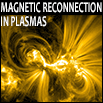Speaker
Sanni Hoilijoki
(Finnish Meteorological Institute)
Description
The global hybrid-Vlasov simulation Vlasiator
(http://vlasiator.fmi.fi), developed at
the Finnish Meteorological Institute, describes ions as velocity
distributions
functions propagated by solving the Vlasov equation and
treats electrons as
charge-neutralizing fluid. We present results from a new 5-
dimensional simulation
describing the Earth's magnetosphere in two dimensions in
the polar plane and three
dimensions in the velocity space under purely southward IMF.
The simulation box
extends 40 Earth radii (RE) in the solar wind direction up to a
hundred RE in the
nightside, thus covering both the dayside and the nightside
reconnection sites. As a
result from the reconnection at the dayside magnetopause we
observe the formation of
two-dimensional equivalents of flux transfer events. The
formation of the flux
transfer events varies spatially and temporally producing
events with different
velocities. Earlier, the mirror modes in the magnetosheath
have been found to affect
temporal variations of the velocity of reconnection jets
(Laitinen et al. 2010).
Waves with the characteristics of mirror modes emerge in the
magnetosheath and advect
toward the magnetopause in the simulation. We investigate
their role on temporal and
spatial variations of the dayside reconnection under steady
IMF condition.
Primary author
Sanni Hoilijoki
(Finnish Meteorological Institute)
Co-authors
Arto Sandroos
(Finnish Meteorological Institute)
Heli Hietala
(Imperial College London)
Minna Palmroth
(Finnish Meteorological Institute)
Otto Hannuksela
(Finnish Meteorological Institute)
Rami Vainio
(University of Turku)
Sebastian von Alfthan
(Finnish Meteorological Institute)
Tiera Laitinen
(Finnish Meteorological Institute)
Urs Ganse
(University of Helsinki)
Yann Pfau-Kempf
(Finnish Meteorological Institute)

